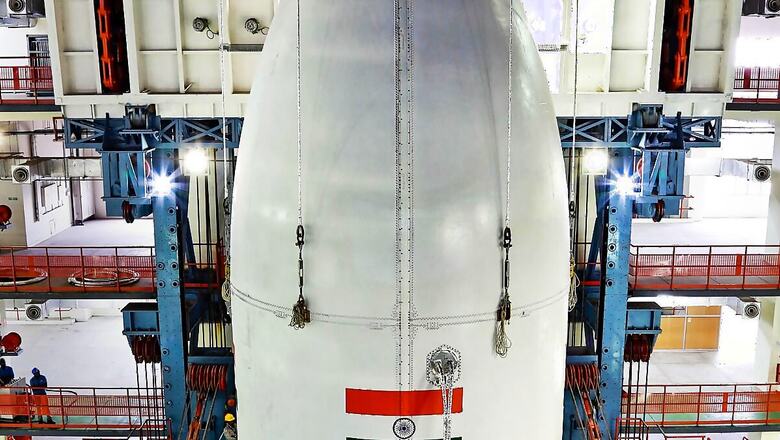
views
ISRO’s ambitious Chandrayaan-3 mission successfully made a touchdown on the Moon surface on Wednesday after a 40-day long journey. Chandrayaan-3 follows the mission of Chandrayaan-2 and its objectives include demonstrate safe and soft-landing, roving on the Moon and conduct in-situ scientific experiments on the lunar surface.
Chandrayaan 3’s Lander successfully made a soft landing on the Moon at around 6.00 pm on August 23. The Landing Module of the lunar craft consists of the Vikram lander and the Pragyan rover, which are loaded with payloads to carry out experiments on the lunar surface.
All About the lander and the rover
According to ISRO’s website, the Vikram lander has the capability to soft land at a specified lunar site and deploy the Rover which will carry out in-situ chemical analysis of the lunar surface during the course of its mobility.
Shortly after the touchdown, one side panel of the Vikram lander will unfold, creating a ramp for the Pragyan rover. The six-wheeled Pragyan with a national flag and ISRO logo will descend from the landed on the lunar surface after four hours and move at a speed of 1 cm per second.
The Vikram Lander module has a mass of over 1700 kg, including the Pragyan Rover and the payloads.
The Lander’s payloads include Chandra’s Surface Thermophysical Experiment or ChaSTE to measure the thermal conductivity and temperature; Instrument for Lunar Seismic Activity or ILSA for measuring the seismicity around the landing site; Langmuir Probe to estimate the plasma density and its variations. The Lander is also carrying a payload from American space agency NASA.
Meanwhile, the rover also has instruments configured with payloads to provide data related to the Moon surface. The rover will communicate with the lander, which in turn will communicate with the earth.
Why is the lander named Vikram?
The lander Vikram has been named after one of the greatest scientists of India Vikram Sarabhai, widely regarded as the Father of the Indian space program. He was a great institution builder and helped to establish a large number of institutions including the Physical Research Laboratory (PRL) in Ahmedabad.
The setting up of the Indian Space Research Organisation (ISRO) in 1969 was one of his greatest achievements. He successfully convinced the government of the importance of a space programme for a developing country like India after the Russian Sputnik launch. Five decades since after he established ISRO, India has reached the Moon and Mars.
After his early education in India, he moved to the University of Cambridge in the UK for his higher studies. He worked for his PhD under the guidance of Nobel Laureate Sir CV Raman at the Indian Institute of Science, Bangalore.
He also established the first rocket launching station in India in Thumba near Thiruvananthapuram, because of its proximity to the equator.
Why is the Rover called Pragyan?
Chandrayaan’s Rover is named Pragyan, which is the Sanskrit word for wisdom and supreme intelligence. The work of the rover will start after touchdown as it will carry out operations for one lunar day or 14 days on Earth. The scientists will have to analyse tonnes of data coming from five scientific instruments on board the lander and rover.
The lander and the rover will have mission life of one lunar day (about 14 earth days) to study the surroundings, during which they have to withstand freezing temperatures of -238 degrees Celsius of a lunar night at the south pole. However, ISRO officials have not ruled out the possibility of them coming to life for another lunar day.




















Comments
0 comment